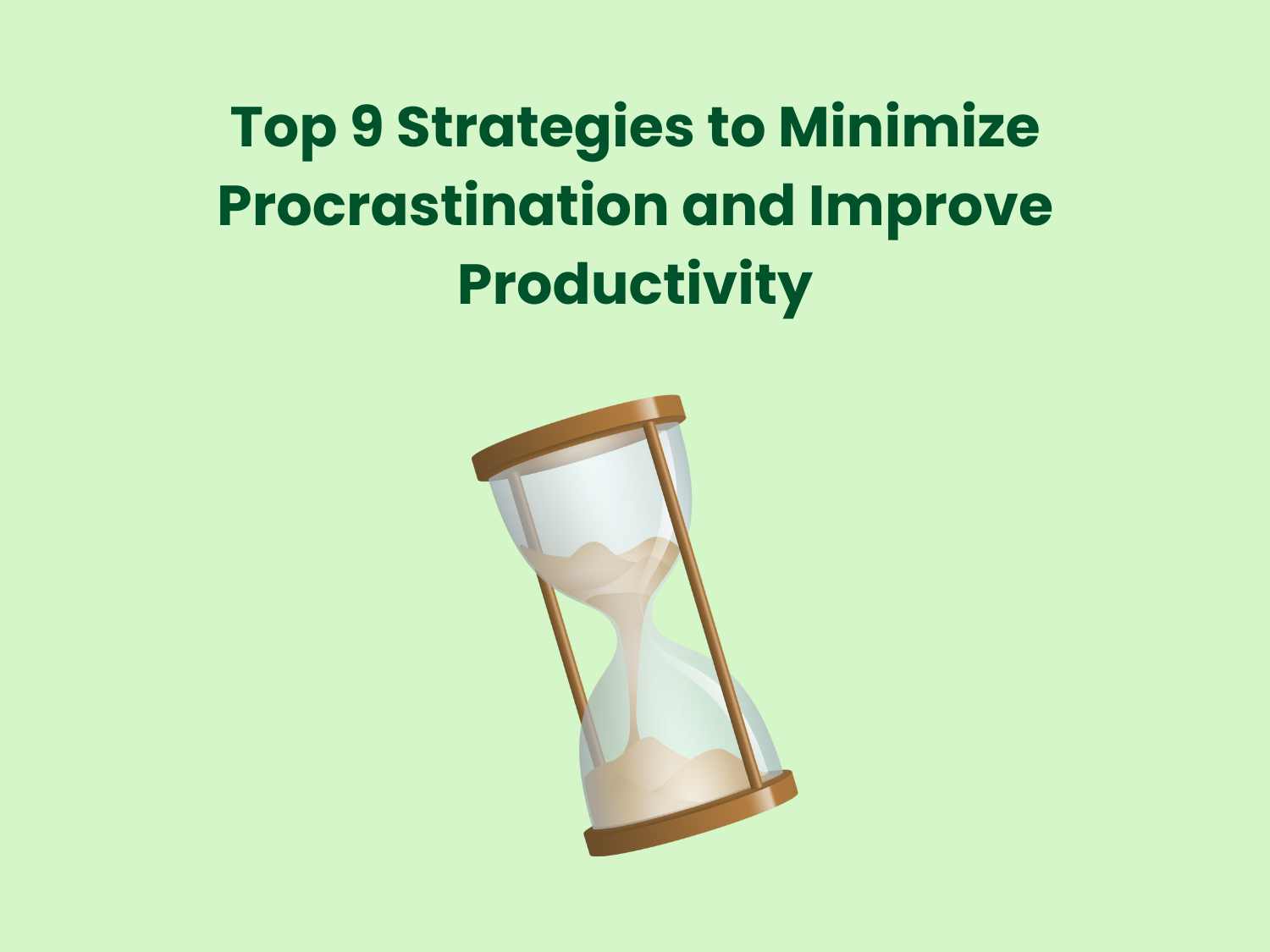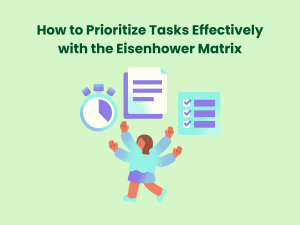We all procrastinate on important tasks at times. Putting off work comes easily when you’re tired, bored, overwhelmed, or anxious. However, chronic procrastination derails productivity and causes major stress when deadlines loom.
The good news is procrastination habits can be minimized through behavioral strategies that create accountability and momentum. This article explores top tips to overcome procrastination tendencies and achieve consistent everyday productivity.
Reasons Behind Procrastination
To curb procrastination, it helps to understand why we do it in the first place:
Instant gratification: We’re wired to seek pleasure but avoid pain. Tasks seem painful, but diversions are pleasurable. So, we opt for what makes us feel good immediately.
Perfectionism: Fearing failure or criticism, we put off tasks to ostensibly do them later “perfectly.”
Rebellion: We resent authority or imposed duties, passive-aggressively rebelling through intentional delays.
Overwhelm: Faced with a huge, complex project, we don’t know where to begin, so we spin wheels instead.
Distractibility: Shiny objects like social media constantly compete for our limited attention and self-control.
Poor organization: Unclear tasks and priorities provide no motivation or direction to get started.
Boredom: Tedious or repetitive tasks are inherently aversive and easy to delay.
Knowing the emotional drivers of procrastination helps devise strategies to counter them.
Actionable Tips to Minimize Procrastination
Use these strategies to overcome procrastination tendencies:
#1. Break big tasks down
Deconstruct intimidating goals into smaller, manageable actions to create momentum. Each piece seems more doable.
#2. Change your environment
If you procrastinate somewhere, go somewhere else. A new setting provides a new stimulus to re-focus.
#3. Set time limits
Give yourself set blocks of time to work using a timer. Limits create urgency. Use apps like Focusmate for peer accountability.
#4. Reward yourself
Build in small, timely rewards for completing tasks like watching an episode of a show. Positive reinforcement works.
#5. Remove distractions
Block social media, notifications, email, etc., during work time. Distraction-free settings promote focus. Use apps like Freedom.
#6. Know your peak times
Schedule priority tasks for when you have the highest energy and self-control, usually in the mornings. Success then breeds more success.
#7. Just start
The hardest part is starting because of inertia. Tell yourself you will work for just 5 minutes. Something is always better than nothing.
#8. Get accountability
Share your goals and deadlines with others and schedule regular check-ins on progress. External accountability helps follow through.
#9. Prioritize ruthlessly
Limit daily tasks to just a few high-impact activities. Say no to everything else. Closely manage your time and attention.
The ideal approach combines removing procrastination triggers and creating external motivators. Experiment to find what works for your needs. But be consistent – new habits take time.
Helpful Mindset Shifts
Adjusting your mindset helps minimize procrastination tendencies:
View tasks neutrally: Don’t pre-judge activities as awful or tedious. Execute first and evaluate after. Assessment biases perpetuate avoidance.
Focus on process, not product: Detach from perfectionism and worry by focusing just on the incremental progress of the next step.
Realize tasks take less time than imagined: We overestimate required effort and time. Tasks feel easier once underway.
Understand the future you will thank you: Imagine looking back proudly at having completed something difficult. Your best self wants you to overcome inertia.
See yourself as the type of person who takes action – Don’t label yourself as lazy or a chronic procrastinator. You are simply practicing a new skill.
Adjusting mindsets around tasks and work ethic gradually transform habits over time. Be patient with yourself.
Scheduling Tips and Tools
Tactical scheduling approaches also combat procrastination:
Place must-do tasks early: Get priority items done first when self-control is highest to build momentum.
Group similar tasks: Batch activities together for efficiency – make all your calls at once, answer emails together.
Use calendars rigorously: Scheduling assigns tasks concrete slots, creating an obligation. Sync calendars across devices for accessibility.
Block time: Define time blocks for specific tasks and projects to focus for set periods without distractions.
Use reminder apps: Set reminders leading up to deadlines to create urgency. Use apps like Todoist and Google Calendar.
Limit work in progress: Reduce context switching by focusing sequentially on one task at a time until completion.
Impose structure around your time and tasks to reinforce follow-through.
Common Procrastination Pitfalls
Watch out for these productivity traps:
Shiny object syndrome: Jumping on whatever new distraction emerges rather than sticking to priorities.
Task overload: Taking on too many responsibilities leaves you paralyzed on where to start. Avoid overcommitting.
Perfectionism: Seeking flawless finished products derails getting started. Focus on progress.
Underestimating time: Failing to account for interruptions leads to delaying start. Build in buffers.
Self-sabotage: Letting mindfulness slip once progress is underway. Maintain situational awareness.
With vigilance and consistent practice, procrastination habits can be transformed. Be patient – it takes time to change behaviors. But applying these tips will help you defeat procrastination and work smarter.
FAQs About Minimize Procrastination
Q. What are signs you may be procrastinating?
A.
– Spending more time planning and preparing to work vs actually working
– Frequent task switching without completion
– Focusing excessively on low-priority tasks
– Finding constant excuses to delay getting started
Q. Why do I procrastinate most with the tasks I want to do?
A. Big, complex passion projects without deadlines are easy to delay due to overwhelm. Break them into mini-milestones. Schedule timeblocks. Use accountability partners. Simulate external urgency.
Q. What should you do if procrastination is harming your mental health?
A. Seek help from a therapist or coach to address root causes like depression, anxiety, low motivation, or ADD/ADHD. Mental health issues exacerbating procrastination may require professional support. Don’t be afraid to ask for help.
Q. How long does it take to overcome chronic procrastination fully?
A. It depends on the source behaviors and how consistently you apply strategies. Allow 2-3 months of diligence before frustration. Creating lasting change takes sustained practice. Celebrate small wins.
Q. What is the #1 thing you can do today to procrastinate less?
A. Just start on that next small step. Do it for 5 minutes. Whatever momentum you build – a sentence written, an email sent – creates progress. Simply begin without overthinking. Once in motion, continuing gets easier.
Don’t accept procrastination as inevitable. With deliberate effort, you can minimize its occurrence and accomplish so much more. Apply these strategies to build motivation, structure, and positive reinforcement. Defeat procrastination by building its replacements – consistency and focus.



